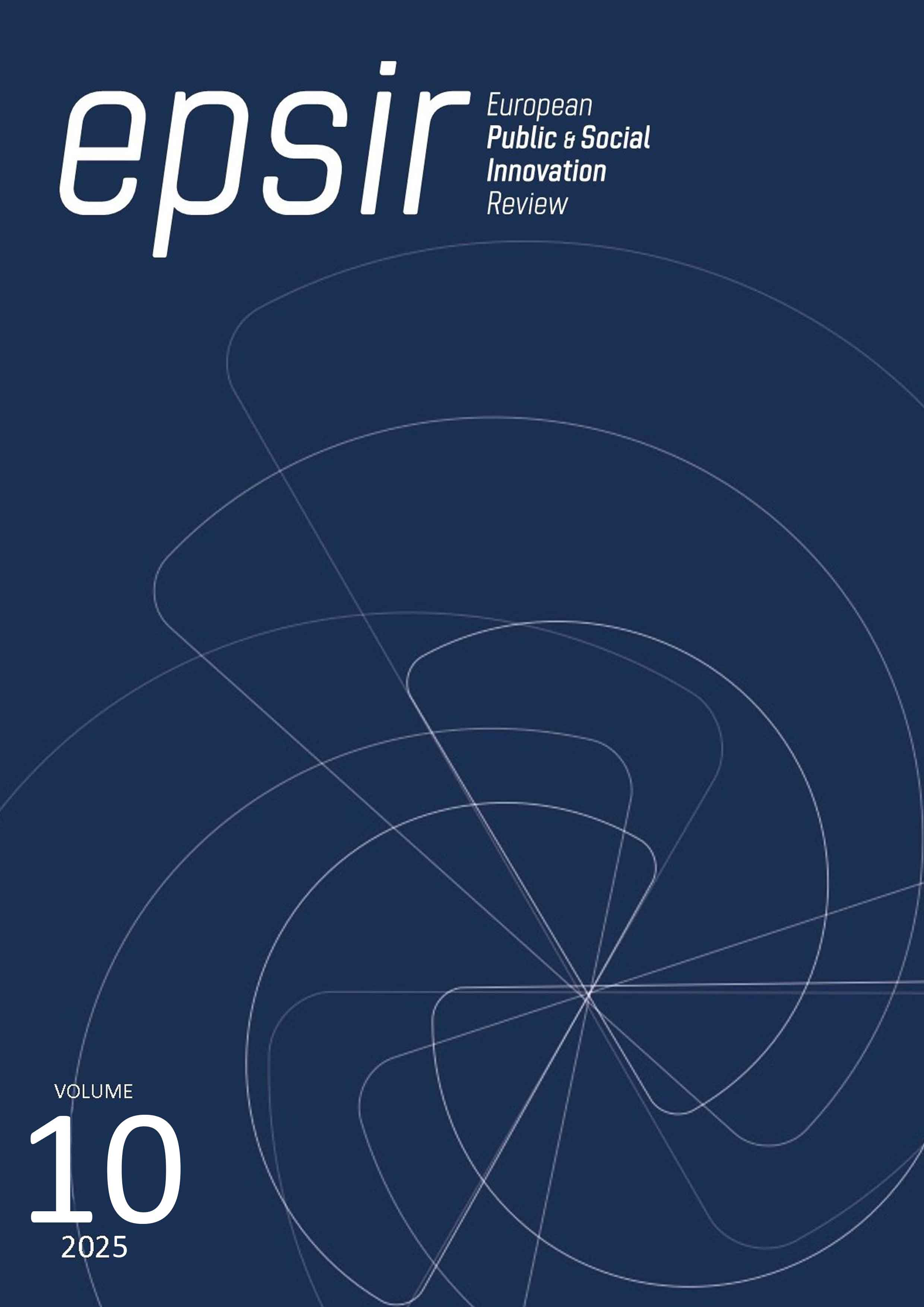Mitchell, Agle and Wood's stakeholder engagement model: an approach from public higher education institutions
DOI:
https://doi.org/10.31637/epsir-2025-1985Keywords:
stakeholders, stakeholder models, stakeholder theory, link management model, Mitchell Agle and Wood model, public higher education institutions, Universidad de las Fuerzas Armadas ESPE, strategic planningAbstract
Introduction: The management of links with stakeholders has gained relevance over time becoming a fundamental task for any organization that seeks to maintain an effective and sustainable relationship with its environment. Methodology: In this research, an exploratory approach with qualitative and quantitative methods was used. The Mitchell, Agle and Wood model was applied to rank the stakeholders of the National Polytechnic School (Public University of Quito-Ecuador); the detailed links in each interest group are highlighted and the stakeholders were classified according to several attributes. Results: the usefulness of the models was evidenced, for the management of stakeholders in accordance with the links they have with the educational institution analyzed. Seventeen key stakeholders were identified. Discussion: the model proved to be effective in classifying stakeholders and addressing institutional challenges such as financing, infrastructure and educational quality. Adapting the model to the university context allowed for a more accurate assessment of stakeholder relationships. Conclusions: The research enabled a consistent survey of the stakeholders of the mentioned university, which will promote transparency and active participation of the stakeholders, contributing to the success and sustainability of the university.
Downloads
References
Acuña, A. (2012). La gestión de los stakeholders, análisis de los diferentes modelos. Grupo de Investigación RSE y Sistemas de Información de la Universidad Nacional del Sur. https://acortar.link/wqgKvE
Baro, M. (2011). Jerarquización de stakeholders para la construcción del capital social de las organizaciones. Mediaciones sociales, 9, 135-162. https://doi.org/10.5209/rev_MESO.2011.n9.38013 DOI: https://doi.org/10.5209/rev_MESO.2011.n9.38013
Capriotti, P. (2013). En Planificación estratégica de la Imagen Corporativa. Instituto de Investigación en Relaciones Públicas. https://acortar.link/z1qyI6
Falção, H. y Rubens, J. (1999). En quién se pone el Foco - ¿En quién se pone el foco? Identificando “stakeholders” para la formulación de la misión organizacional. Revista del CLAD Reforma y Democracia, 15. https://acortar.link/3B9o5C
Bermeo, J., Feijoo, I. y López, M. (2018). Segmentación de mercado. En Gestión de proyectos editoriales universitarios (Ed.), Marketing aplicado en el sector empresarial (pp. 31-46). Ediciones UTIMACH. https://acortar.link/q0U5U1
Fernández, J. y Bajo, A. (2012). La Teoría del Stakeholder o de los Grupos de Interés, pieza clave de la RSE, del éxito empresarial y de la sostenibilidad. Revista Internacional de Investigación en Comunicación aDResearch ESIC. 6(6). 130-143. https://dialnet.unirioja.es/servlet/articulo?codigo=3980299 DOI: https://doi.org/10.7263/ADRESIC.006.06
Freeman, R. y Mcvea, J. (2001). A Stakeholder Approach to Strategic Management. SSRN Electronic journal, 1. https://acortar.link/jPyplU DOI: https://doi.org/10.2139/ssrn.263511
Gaete, R. (2012). Gobierno universitario pluralista. Una propuesta de análisis desde la teoría de los stakeholders. RUSC. Universities and Knowledge Society Journal, 9(2), 115-129. https://www.redalyc.org/articulo.oa?id=78023425010
Galvão, M., Corrêa, R. y Gonçalves, L. (2009). Stakeholder Management and Organizational Sustainability: a Brazilian Case Study from the forest sector. RAC, Curitiba, 13, 39-52. https://acortar.link/wmXsuL
Giordano, D. (2017). Ponderación de los stakeholders de la biblioteca nacional durante la gestión 2008-2015. [Tesis de maestría, Universidad de Buenos Aires]. Biblioteca digital. https://acortar.link/Xnbggv
Hallahan, K. (2000). Inactive publics: the forgotten publics in public relations*. Public Relations Review, 26(4), 499-515. https://doi.org/10.1016/S0363-8111(00)00061-8 DOI: https://doi.org/10.1016/S0363-8111(00)00061-8
IESE Business School. (2009). La evolución del concepto de Stakeholder en los escritos de Ed Freeman. Newsletter, 5, 1-14. https://acortar.link/GNHiJI
Mañay, A. (2015). Análisis de la comunicación en crisis en los sectores afectador por la nueva ley de sustitución de importaciones en el sector distribuidor de insumos. Estudio de caso, “Mega Santa María S.A.”. [Tesis de grado, Universidad Tecnológica Equinoccial]. Repositorio Institucional. https://acortar.link/aZ0rke
Milosevic, D., Mitchell R. y Wood, D. (2018). Toward a theory of stakeholder identification and salience: defining the principle of who and what really counts. Academy of Management Review, 43(4), 853-886. https://acortar.link/ENpNlY
Mitchell, R., Agle, B. y Wood, D. (1997). Toward a Theory of Stakeholder Identification and Salience: Defining the Principle of Who and What Really Counts. The Academy of Management Review, 22(4), 853-886. https://doi.org/10.2307/259247 DOI: https://doi.org/10.2307/259247
Morales. (2019, 7 de Febrero). Matriz de prominencia, una herramienta para priorizar a los stakeholders. Informática & Coaching. https://acortar.link/4mjmel
Moreno, P. R. (2015). Los Stakeholders y la Responsabilidad Social empresarial. En Fundación Instituto Iberoamericano de Mercados de Valores (IIMV) (Eds.), El Gobierno Corporativo en Iberoamérica (pp. 477-538). Proyectos Editoriales S.A. https://acortar.link/b7eoTv
Navarro, F. (2008). Responsabilidad Social Corporativa: teoría y Práctica. Revista del Ministerio de Trabajo e Inmigración, 193-195. https://acortar.link/0DRm02
Rawlins, B. (2006). Priorización de las partes interesadas para las relaciones públicas. Instituto de Relaciones Públicas. https://acortar.link/iEbbCT
Uribe A. y Requena, R. (2013). Consideraciones del enfoque stakeholder. Punto de Vista, 4(7), 31-50. https://doi.org/10.15765/pdv.v4i7.442 DOI: https://doi.org/10.15765/pdv.v4i7.442
Viera, E. y Hoffmann, V. (2006). Práticas de sustentabilidade ambiental para empreendimentos turísticos hoteleiros: aplicação de um modelo. Universidad de Caxias do Sul – Mestrado em Turismo. https://acortar.link/hhDsiN
Zárate, R., Beltrán, Y. y González, C. (2020). Relación con los stakeholders en el marco de la responsabilidad social empresarial. Revista Espacios, 41(32), 211-226. https://ww.revistaespacios.com/a20v41n32/a20v41n32p20.pdf
Downloads
Published
How to Cite
Issue
Section
License
Copyright (c) 2025 Lorenzo Adalid Armijos Robles

This work is licensed under a Creative Commons Attribution-NonCommercial-NoDerivatives 4.0 International License.
Authors who publish with this journal agree to the following terms:- Authors retain copyright and grant the journal right of first publication with the work simultaneously licensed under Creative Commons Non Commercial, No Derivatives Attribution 4.0. International (CC BY-NC-ND 4.0.), that allows others to share the work with an acknowledgement of the work's authorship and initial publication in this journal.
- Authors are able to enter into separate, additional contractual arrangements for the non-exclusive distribution of the journal's published version of the work (e.g., post it to an institutional repository or publish it in a book), with an acknowledgement of its initial publication in this journal.
- Authors are permitted and encouraged to post their work online (e.g., in institutional repositories or on their website) prior to and during the submission process, as it can lead to productive exchanges, as well as earlier and greater citation of published work (See The Effect of Open Access).




